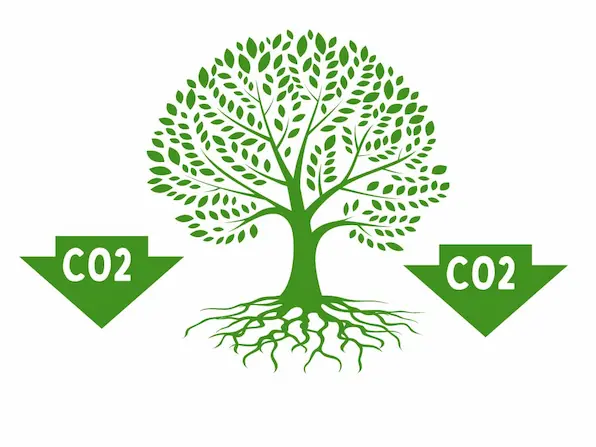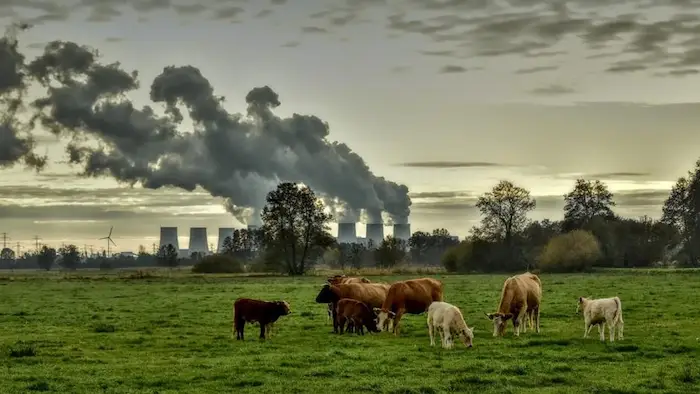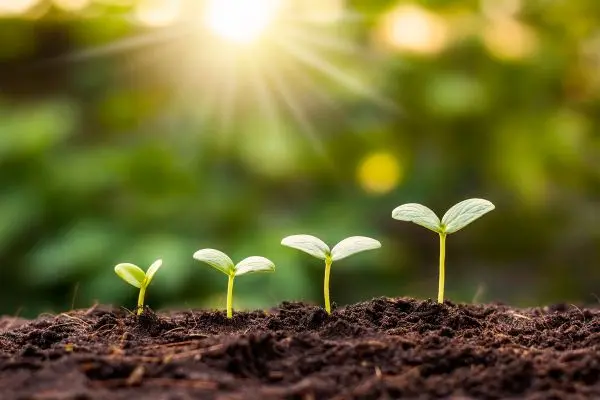The Vital Role of Soil in Our Environment
Soil plays a vital role in our environment. Here we summarise the key role healthy soils play, along with the modern challenges posed to soil health.
Healthy Soil: The Basis For Our Own Survival

Soil is essential for plant life, providing the necessary nutrients, water, and physical support for plants.
It contains a complex mix of minerals, organic matter, and micro-organisms that all contribute to the nutrient cycle. This cycle ensures that plants receive the elements they need to grow, which are absorbed through root systems.
Additionally, soil structure influences root penetration and water retention, critical factors for plant health and productivity.
In supporting plant productivity, healthy soils ultimately sustain the food webs and biodiversity within ecosystems that we rely upon for our own survival.
Nutrient Recycling in Soils

One of the critical functions of soil is the recycling of nutrients through the decomposition of organic matter.
Dead plants, animals, and other organic materials are broken down by soil microorganisms, including bacteria, fungi, and insects. This decomposition process converts organic materials into humus, a rich, nutrient-dense substance that enhances soil fertility.
The nutrient recycling process ensures that essential elements are continually made available for plant uptake, thus sustaining the growth and productivity of ecosystems. Without this function, ecosystems would quickly run out of the nutrients necessary to support life.
Soil: A Habitat For Key Micro-Organisms
Soil is absolutely teeming with life, providing habitat for a vast array of organisms, including bacteria, fungi, insects, earthworms, and burrowing animals. These organisms play crucial roles in maintaining soil health and fertility.
For instance, earthworms aerate the soil, enhancing its structure and promoting root growth, whilst certain microorganisms convert atmospheric nitrogen into forms that plants can absorb.
The biodiversity within soil also contributes to the resilience of ecosystems, enabling them to recover from disturbances and adapt to changing environmental conditions.
Soil and Water Regulation

Soil plays a pivotal role in the hydrological cycle. It acts as a natural filter, purifying water as it percolates through the soil layers.
Soil particles are known to trap contaminants, pathogens, and excess nutrients, preventing them from entering groundwater supplies and surface water bodies.
Furthermore, good quality soil regulates the flow of water, reducing the risk of flooding by absorbing rainfall and slowly releasing it into rivers and streams. This absorption also helps recharge aquifers and mitigate the impacts of drought.
Climate Regulation and Carbon Sequestration by Soils

Soil is a significant player in the global carbon cycle, acting as both a source and sink of carbon dioxide (CO2).
Through the process of photosynthesis, plants absorb CO2 from the atmosphere and convert it into organic matter, some of which is transferred to the soil through roots and plant residues. This process is known as Carbon Sequestration and is one of the primary forms of Carbon Offsetting.
Soils store vast amounts of carbon, much more than the atmosphere and vegetation combined. This storage helps mitigate climate change by reducing the amount of CO2 in the atmosphere.
Practices such as cover cropping, and agroforestry can enhance soil’s capacity to sequester carbon, contributing to climate change mitigation efforts.
Soil Links to Human Health and Food Security

Soil health is directly linked to human health and food security.
Soils rich in nutrients and organic matter produce healthier crops with higher nutritional value. Conversely, degraded soils lead to poor crop yields and lower nutritional quality, exacerbating food insecurity and malnutrition.
Soil contamination with heavy metals, pesticides, and pathogens can also pose serious health risks to humans through the food chain and water supply. Therefore, sustainable soil management practices are essential to ensure safe and nutritious food for the growing global population.
Challenges to Soil Health
Despite its importance, soil faces numerous threats that can compromise its health and functionality. Understanding these challenges is crucial to developing strategies for soil conservation.
Below are 5 key challenges to be aware of:
1. Contamination
Soil contamination arises from industrial activities, agricultural chemicals, improper waste disposal and salinisation.
Pollutants such as heavy metals, pesticides, and petroleum products can accumulate in the soil. This in turn can lead to bioaccumulation of toxins in the food chain, affecting both wildlife and human health.
Salinisation increases soil salt content, which can be toxic to plants and degrade soil structure. Improper irrigation practices in coastal regions is a primary cause of this contamination form.

2. Erosion
Soil erosion is one of the most significant threats, caused primarily by wind and water. When vegetation cover is removed through deforestation, overgrazing, or poor agricultural practices, the soil becomes vulnerable to being washed or blown away.
This loss of topsoil reduces soil fertility and can lead to desertification, rendering land unproductive and unable to support plant life.
3. Degradation and Depletion
Soil degradation occurs through various processes, including compaction and loss of organic matter.
Intensive farming practices is a common source of degredation, depleting soil nutrients faster than they can be naturally replenished, leading to reduced soil fertility.
4. Urbanisation
Urbanisation leads to the sealing of soil surfaces with concrete and asphalt, reducing the land available for agriculture and natural habitats.
This process disrupts the natural functions of soil, including water filtration and habitat provision.
Urban sprawl also often results in the fragmentation of landscapes, impacting soil connectivity and ecosystem health.
5. Climate Change

Climate Change poses a multifaceted threat to soil health. Increased temperatures and altered precipitation patterns can exacerbate soil erosion and degradation.
Extreme weather events, such as heavy rains and droughts, can disrupt soil structure and lead to loss of soil organic matter.
Additionally, the thawing of permafrost in arctic circle soils releases stored greenhouse gases, contributing to further climate change.
Soil Conservation Efforts
Addressing these challenges requires comprehensive soil conservation strategies.
Practices such as crop rotation, cover cropping, reduced tillage, and agroforestry can enhance soil health and resilience.
Protecting existing forests, restoring degraded lands, and incorporating soil considerations into Biodiversity Net Gain programmes is also critical to maintaining soil functionality.
Furthermore, Education and awareness programmes can play a significant role in promoting soil conservation among farmers, policymakers, and the general public. The Save Our Soils Campaign by the Soil Association is one such example active today.
Soil conservation is also not just a rural issue, modern initiatives such as Urban Rewilding are raising the value and benefits of soil within urban spaces.

Soil: Essential to Our Future
Soil is indispensable to the environment, providing a foundation for plant growth, regulating water supplies, recycling nutrients, supporting biodiversity, and mitigating climate change.
Its conservation is therefore essential for the health of ecosystems and the well-being of humanity.
Understanding and addressing the challenges facing soil is crucial to ensuring a sustainable and resilient future for the planet.
Let us know your view on soil health in the comments section below!





